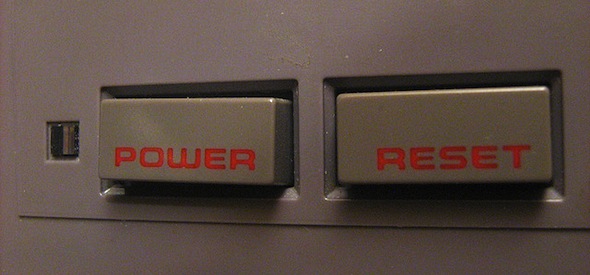Want news on the updated Skinny-Fat Solution? Click here to see the new page or read some news at the bottom of this post. We’ve been digging for a long time. This is essay thirty-three. Thirty-three! And it all funnels us into this essay you’re now reading, so prepare yourself. To start in the best [...]
Want news on the updated Skinny-Fat Solution? Click here to see the new page or read some news at the bottom of this post.

We’ve been digging for a long time. This is essay thirty-three. Thirty-three! And it all funnels us into this essay you’re now reading, so prepare yourself.
To start in the best spot, let’s do a tiny recap. It took us so long to get here because we’re on tricky turf. It’s like everyone is playing the same video game, A Link to the Body . . . Majora’s Muscle . . . Ocarina of Training, but everyone is at a different save point. Any question or plan of attack is tough to tackle because it depends on what you’ve done, what you’ve learned, and where you’ve yet to go. Because we all have our own unique DNA and live our own lives, we’re in this soupy nebula of context. (And cookies!)
That’s why we have to hit the reset button. It’s really the only genuine way to understand how this all comes together. We have to start at the same place, play the same game, and work towards the same end.
Let’s get jacked, shall we?
Assumptions for skinny-fat guys
With my kind (skinny-fat guys), I assume a few things:
- Body fat baggage
- Undermuscled as a whole
- Wanting to be well muscled and proportioned with a lower body fat
That tells us not only where we are, but also where we want to be. It defines the game.
If you’re skinny-fat, you’re probably either new to the game or have been doing things wrong long enough to approach this as if you were totally new to the game. When you get stuck in Zelda, you have to go back to the beginning and retrace your steps to make sure you didn’t miss anything. You almost have to be more detailed the second time around.
By this I mean that “advanced” training tactics or nutrition tactics are like the flambé. Later? Yes, make me wonderful caramelized banana stuff. Now? Get a fire extinguisher. No quick, seriously.

And so let’s zoom out. We want our body to be musclecentric—we want to deliver excess nutrients and energy to muscle and not so much body fat. Problem being that a skinny-fat body is usually working opposite of this. I call it the flinch, but somehow and someway your body decided that, in the midst of having some extra energy and nutrients around, filling fat cells was the smartest thing to do.
This is why I dig deeper than calories or even overt goals like, “losing weight.” Any physical goal we chase starts with the interior.
It’s your job to convince your innards to break down and emulsify your body fat, just as it’s your job to convince them to build muscle. And even then, it’s your job to do your best to permanently wire this function into yourself.
Sure you can lose weight or fat by being a martyr and permanently restricting calorie-energy intake, but that’s not what we’re after. (Most people that do this end up gaining the fat right back anyway.) There’s a difference between chasing an immediate physical reward and actually thinking about changing body function long term.
This gives us our three evergreen tips.
- Strength train like a boss; like, fall in love with the stuff—make it your new church
- Eat more vegetables than you think you need
- Eat more protein than you think you need
Few people that you look at and admire physically violate these three things, especially those that come from an epigenetic sink hole.
Why these three things?
The only way to convince the body to continually cater to the muscles on a regular basis is to challenge them regularly (ie: put them under strain and tension various ways, be it with weights or bodyweight, although I think weighted exercises deliver benefits faster because of the more comprehensive systemic loading).
This is why strength training the right way is the absolute most important piece to anyone’s physical goals. (So long as those goals include being more muscular than you already are [or even “looking better” than you already do].) And when you consider this under the backing of skinny-fat syndrome, it’s all about doing this and finding a way to losing fat that doesn’t detract from the muscle goal at hand.

A lot of people that go on a cardio blitzkrieg do themselves a disservice because it just adds to the stressors the body has to deal with. Remember: everything flows from stimulation. When you train, you’re filling up a syringe with something and jamming it into your leg for your body to overcome.
If you do any sort of intensive “cardio,” then it’s simply something else the body has to adapt to. And the bummer about this is that the “cardio” adaptations aren’t the same ooey gooey strength-power-muscle adaptations most seek.
The primary stress for “cardio” usually isn’t interpreted as, “I need bigger or stronger muscles.” Instead, it’s, “It’s not the load or tension. I’m overcoming the load just fine. What’s hurting me is my inability to deliver energy to the working muscles.” And so with “cardio,” the body errs on energy delivery side of adaptation which tends to use a different fuel supply and just adds to the tangling of wires we already got going on.
If you want your body to be musclecentric, why hammer it with more activity that’s going to force it to repair and service mitochondrial adaptations over muscle adaptations?*
If your answer is, “To help fat loss,” then you’re onto something . . . kind of. And this is really what makes skinny-fat syndrome tricky.
The sticky skinny-fat situation
Building muscle is all about convincing your body that muscle needs built. Many factors go into this beyond muscle tension (like bone loading, neural involvement, immune response). For some people it takes more convincing. Part of this is undoubtedly genetic. Jeff Seid, who some say (like Frank Yang) has one of the most “aesthetic” physiques, was a brick house in high school at the age of fifteen.

The not so lucky ones likely need more convincing, and so stimulating the right way is important to get things going as fast as possible.
If you’re a true skinny guy, that’s probably learning how to train good, doing it for a while, and then probably eating more than you’re used to in order to convince your body you have the nutrients and energy it needs to justify the investment of muscle.
If you’re a skinny-fat guy, that plan might “work,” but not as well because you’ve already done some convincing of your own. You aren’t new to delivering extra calories-energy, it’s just that you did it during a time when your body felt that muscle was an unimportant investment. You not only have to convince the importance of muscle, but also the un-importance of body fat.
It seems like an impossible thing to do from afar. The two biggest buckets to muscle building and fat loss are stimulation and supply. Soul can also play a role (stress might = fat), but I’m going to assume you know this and are sleeping well and aren’t teeming in stress all day. (Revisit S. Island here if you don’t know about stimulation, supply, soul, and signaling.)
The problem with muscle gain and fat loss under the guise of stimulation and supply: they’re opposite. The best stimulation for the direct use of body fat isn’t the same as that for muscle, just as the best supply situation to encourage using up stored energy is opposite that of stockpiling extra in muscle.
This is why, in my opinion, it’s rarely a good idea to go balls to the wall on both at the same time. When your psychological investment is high in one, make it lower in the other.
What this means for the three stages
I think that sets the stage well enough to strike the oil. All of this now gets placed within the framework and creates the three stages of skinny-fat syndrome as I see them.
As much as I wanted to start writing about the stages in this essay, it toppled 3,000 words with the first layer attached. I thought about going ahead and attaching the first stage here leaving the second two stages for a separate post, but I’d rather you read each stage in sequence so you can understand the progression from one to the next.
So next essay we gut the three stages and conclude what all of this means.
+++++
Photo Credit: syringes